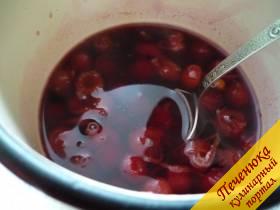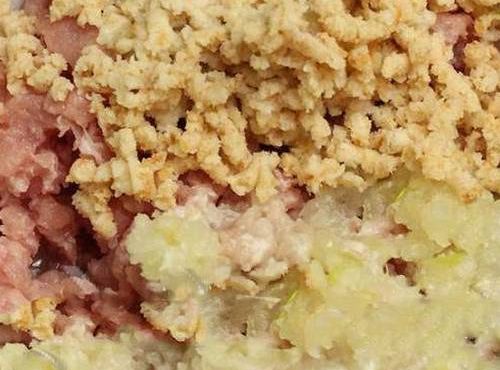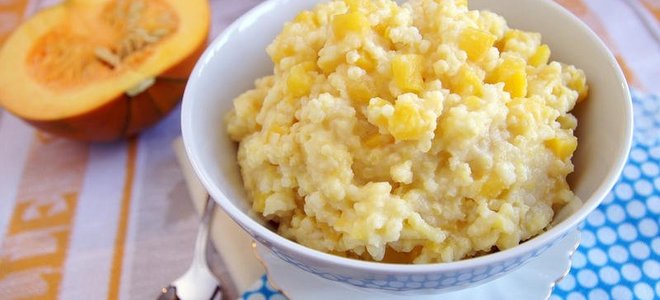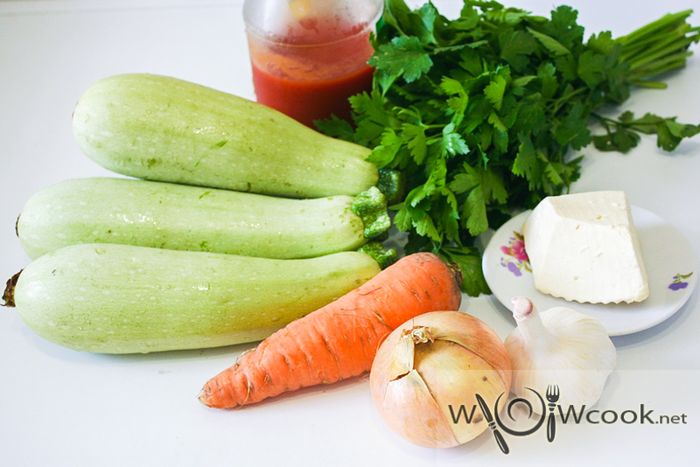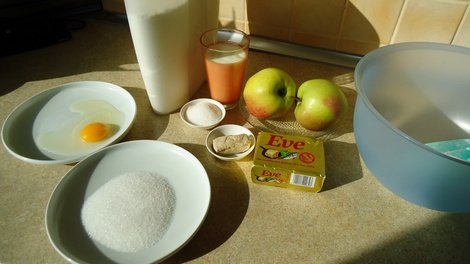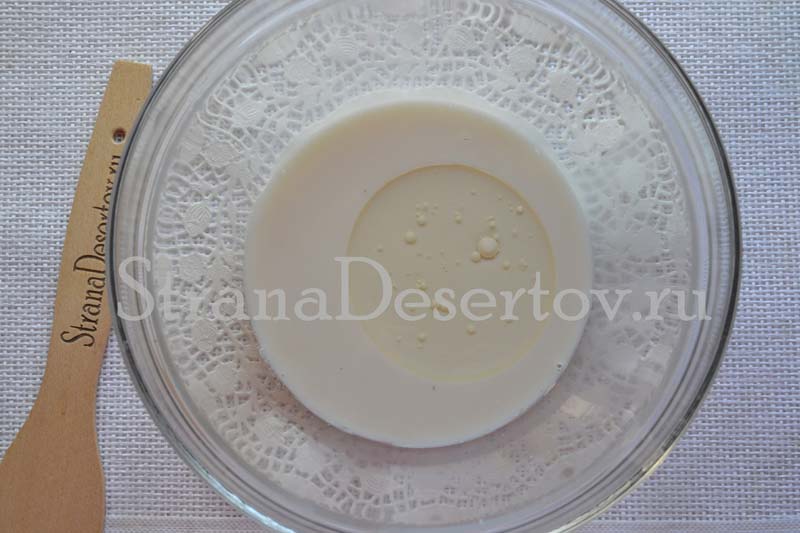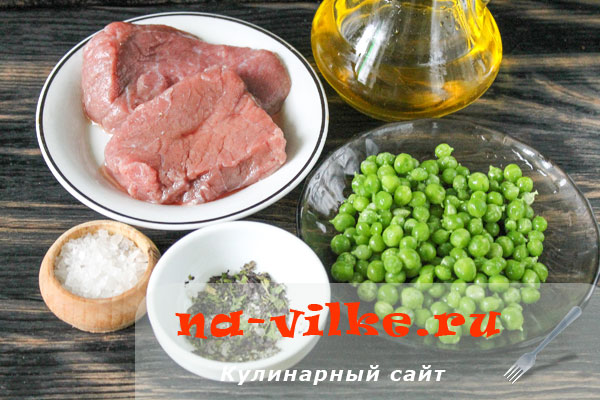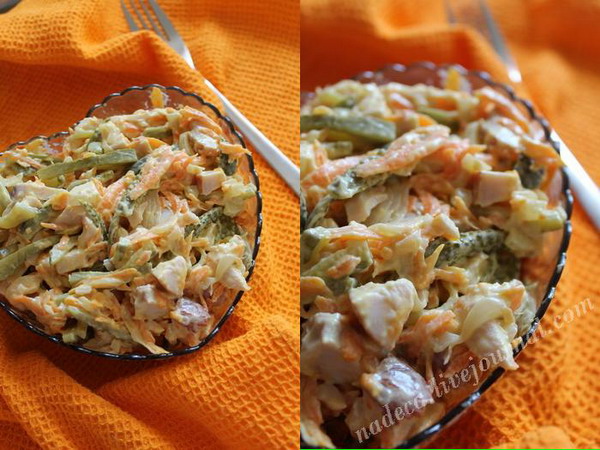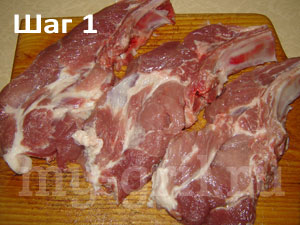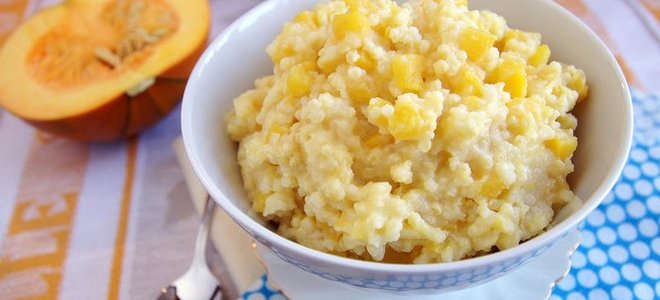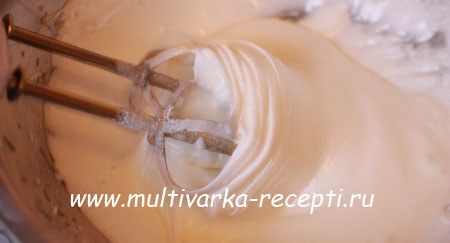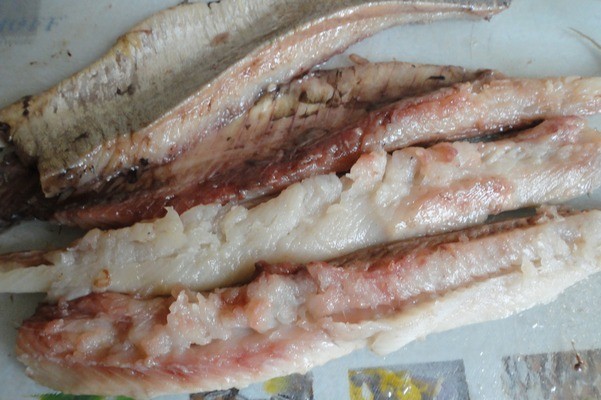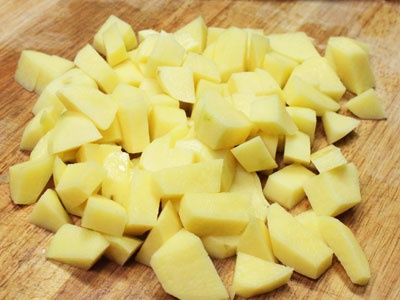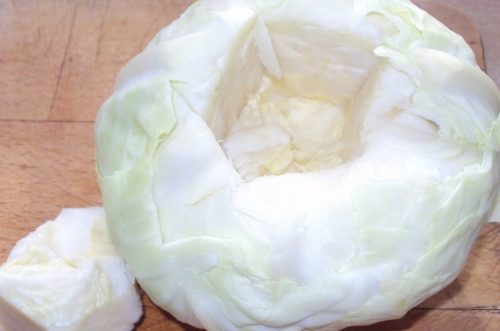Mexican national dishes. National dishes and cuisine of Mexico
Mexican cuisine is characterized by originality, originality and uniqueness of dishes. It combines the incongruous - sweet and savory, and get delicious dishes that are considered the pinnacle of culinary art.
Mexican Cuisine Features
The cuisine of Mexico has a rich history and consists in adapting the best traditions of African, Caribbean and South American cuisines to the hot temper of the Mexican people.
Temperament can be called a feature of Mexican cuisine: dishes are distinguished both by spiciness and spice.
Another characteristic feature is Mexican table etiquette. He orders to take dishes of national cuisine with his hands.
History and traditions of Mexican cuisine
The world-famous cuisine, recognized and revered throughout the globe, was born in the literal sense of the "pasture" feed. Cacti, snakes, lizards and insects - that is what stood at the origins.
The characteristics and traditions of the Aztecs wandered through the desert only slightly changed and supplemented with the beginning of settled life on the shores of Lake Texcoco. Having erected the city of Tenochtitlan, the Aztecs began to comprehend agriculture: they cultivated sweet pepper, amaranth, corn, potatoes, pumpkin, and legumes. The meat diet, previously consisting of everything flying and crawling, was supplemented by meat from farmed cattle. But boiled and baked creeping creatures and now often become part of the menu of the native Mexicans.
The favorite method of cooking meat was grill. Serving such a treat is customary with a side dish of beans, beans with the addition of salsa sauce or guacamole.
“Barbarians” surprised with their skillful culinary combinations even the most avid gourmets of that time - the Spaniards. A characteristic feature of the cuisine, both then and now, is the skillful combination of traditional national products: beans, potatoes, corn, avocados, pumpkins, beans - with spices.
List of National Products

Dishes of Mexican cuisine are unthinkable without:
- corn tortillas, which can be served as a separate dish, or as a component of an appetizer;
- tabasco sauce - spicy is one of the most important "chips" of Mexican cuisine;
- nachos - corn chips that are eaten in bite with sauces.
Now it’s worth talking in more detail about corn, which in Mexico is considered not only the queen of the fields, but also the mistress of the culinary world. On its basis, tortillas, nachos, burritos, anchilada, chimichanga and even desserts are prepared. It is customary to add as an ingredient to many traditional dishes.
Another indispensable product: hot peppers. It is not only used for sauces, but also added to salads, served with meat and fish.
Did you know The fashion for using tequila with salt and lime was invented exclusively for tourists! Mexicans themselves frankly do not understand how to somehow spoil the extraordinary taste of their traditional agave vodka.
Mexican Restaurants and Cafes
In almost every point of the globe, you can try dishes that are prepared based on the characteristics of Mexican cuisine. Of course, they are slightly adapted, but they still have notes of burning Mexican passion.
If you want to taste the whole taste symphony of the most popular dishes of Mexico, buy a ticket to the sultry sandy country and immediately go to the restaurant "Don Chong". There you can taste dishes prepared according to old recipes preserved from antiquity. Larvae of ants and caterpillars, a fried iguana, a baked armadillo lizard and other most popular dishes of native Mexicans - this is what awaits visitors to the restaurant.
Recipes of the most popular dishes
Many recipes used in our time have come to us in their original form. What can I say - even the cooking method remains the same: for example, spices are still recommended to grind in a mortar.
Burito - a traditional dish of Mexican cuisine
If the trip to Mexico is delayed, prepare a dish that meets the characteristics and traditions of this country, on your own.
For 5 servings you will need:
- 5 tortillas (tortillas from cornmeal);
- 3 small chicken breasts;
- 2 tomatoes;
- fresh cucumber;
- bell pepper;
- onion head;
- sauce (mayonnaise);
- spices and spices.
She has been living and working in China for seven years from Minsk, which means that her stomach (and nerves) are already hardened. The traveler is constantly trying something new, guided by the principle: "if the local stomachs digest it, mine can." Before going to Mexico, the girl prepared in advance for culinary experience, and for 34travel Tanya talked about the main dishes and drinks of Mexican cuisine.
BASES
Mexican cuisine is a mix of Mayan and Aztec Indian cuisines that used corn, beans, avocados, tomatoes, cacti, xilapenos, and Spanish in their dishes - it added desserts and meat dishes. Warning for all tender stomachs: Mexican cuisine is spicy. Very spicy!
Mexicans eat a lot of fruits, vegetables, and beans. And they can’t live without corn. It is present everywhere: in products from corn flour (tortilla), as an everyday snack in boiled and fried versions, in desserts and even in drinks.
What does not one Mexican mil do without?
Salsa - A traditional sauce made from tomatoes and peppers with the addition of other seasonings. Most often, green (salsa verde) and red (salsa rojo) are found. In general, there are many varieties. And its severity depends on the base pepper, which in Mexico is a huge amount.
Mole - hot pepper-based sauce. In total, there are 7 colors in Mexico: the color depends on the color of the base pepper and ingredients. Often dried fruit, garlic, cloves, anise, tomatoes, sometimes even chocolate are added to the mall. The most popular option is mole poblano, which is considered the national dish of Mexico. You can buy a mole in the market (sometimes in the form of sauce or powder).
Guacamole (guacamole) - pasty avocado sauce. Absolutely not spicy and is considered the favorite of "gringo" (foreigners).
Jalapeno - medium hot green chilli. In Mexico, it is eaten with all the dishes! Even if you decide to try sushi, soy sauce will be with pieces of this king of peppers.
Lime - Mexicans add it to almost everything. A kind of salt substitute.
The above products you will see in front of you constantly. Usually they are put on the table in any restaurant and added to taste. Also look for them in any tacos tray. Do not like spicy? Then your choice is guacamole and lime.



BREAKFAST
Churros - This sweet came to Mexico thanks to the Spaniards. You can compare them with donuts, only oblong or in the form of a lasso. And in the section, churros are in the form of stars and an ordinary circle. You can find them everywhere, from markets to breakfasts in hotels. Often served with chocolate sauce.
Price:from 5 pesos (€ 0.2).
Tamale - corn flour tortilla wrapped in corn leaves. Often tamale come with meat, cheese or even fruit fillings.
Price:from 20 pesos (€ 0.8).
Chilquiles - sliced \u200b\u200btriangles and fried tortilla slices, which are filled with salsa on top. Meat, cheese, onions, lemon juice, avocado, sour cream or a side dish of beans are added to the dish, and everything is abundantly sprinkled with cheese. For some reason, not very loved by traveling foreigners.


Takos
There are different tacos. And to figure out what you order them with is not so simple even with a dictionary. Here are some of the most common tacos and fillings for them.
Tacos al pastor / de adobada - tacos with pork.
Tacos de asador - tacos with grilled meat.
Tacos de cabeza - tacos with a "head". In fact, for the filling use this:
Cabeza (head muscles) - head muscles;
- Sesos (brains) - brains;
- Lengua (tongue) - language;
- Cachete (cheeks) - cheeks;
- Trompa (lips) - lips;
- Ojos (eyes) - eyes.
Everything is not as nasty as it sounds. First, try the tacos with the tongue.
Tacos de camarones - tacos with shrimp.
Tacos de cazo - tacos with entrails:
Tripa - stomach;
- Saudero - tender beef slices;
- Carnitas - pork slices.
Tacos de pescado - tacos with fish.
Taqioto - flauta / tacos dorados - fried crispy tacos.
Price: from 35 pesos (€ 1,5) for 5 pieces.
By the way, in Mexico you can have tacos for breakfast, lunch and dinner. The reason is simple - cheap and very affordable. Tuckery is literally on every corner.



SNACKS AND HOT DISHES
Huarache - a dish from Mexico City, which is an open large tortilla, with meat (as in tacos, chosen to taste), beans, potatoes, onions and salsa. From above everything is sprinkled with cheese.
Price:from 15 pesos (€ 0.7).
Elote - boiled corn on a stick. You can grease with mayonnaise and sprinkle with cheese.
Price:from 20 pesos (€ 0.9).
Esquites - the same corn, but peeled and in a glass.
Price: from 25 pesos (€ 1,1) per glass.
Ceviche - seafood marinated in lemon juice.
Price: from 45 pesos (€ 2).
Chapulines - fried grasshoppers. Mexicans like to eat them with lemon juice or add them to homemade cheese.
Price: 10 pesos (€ 0.5) per glass.
Escamoles (Escamoles) - Ant larvae fried in butter. But the ants are not ordinary, but eating agave roots (the plant from which tequila is made). It tastes somewhat like cottage cheese fried with onions.
Price: from 80 pesos (€ 3,5).
Chicharron - “Mexican chips.” These are fried crispy pork skins served with salsa and guacamole.
Chorizo - spicy pork sausages.
Fajitas - grilled and stripped meat with vegetables. Served in a pan, often with sour cream, fried onions, cheese and tomatoes.
Price: from 20 pesos (€ 0.9).
Chiles en nogada - stuffed peppers in a sweet cream sauce. For meat, meat, nuts, dried fruits are used, and from above everything is decorated with pomegranate seeds. Be sure to try it!
Price:from 120 pesos (€ 5).
Quesadilla (Quesadilla) - grilled corn tortilla with cheese.
Price: from 10 pesos (€ 0.5).
Enchilada - tortilla wrapped in meat or vegetable filling.
Price: from 10 pesos (€ 0.5).
Oaxaca cheese (queso Oaxaca) - This is actually the Mexican version of Parmesan.
Coctel de camarón - Fresh shrimps marinated in lemon and other hot sauces. Served with avocado and slices of fried cake.
Price: from 65 pesos (€ 2.7) per serving.
Tlayuda (Tlayuda) - a traditional dish of the city of Oaxaca. Pizza cake with various vegetables, meat to choose from, beans and local cheese.
Price:from 20 pesos (€ 0.9) per item.
Birria - goat stew, which is popular in the state of Jalisco.
Price: from 45 pesos (€ 2) per serving.


Mild-alcoholic and non-alcoholic drinks
Pulque - An alcoholic drink from the fermented American Agave juice. It has a milky white color, viscous and sour to taste. Pulka contains carbohydrates, vitamins C, B, D and E. Locals love it for its nutritional value.
Texuino - A cold drink made from fermented corn from the state of Jalisco.
Hamaika (Jamaica) - One of the most popular drinks in Mexico and Latin America. Hibiscus iced tea. It can be found in huge transparent barrels both in street stalls and restaurants (in Guatemala, even in McDonald's).
Orchata (Horchata) - A drink made from rice, almonds, cinnamon and sesame, tastes like milk with cinnamon.
Pozol - A drink made from fermented corn dough with water and cocoa. He is adored by local Indians and hated by foreigners. Often sold in roadside stalls, along with orca and hamaika. It looks strange, but it tastes like cold cocoa with cereals. It perfectly quenches thirst and a little hunger.
Tepache - red fermented drink made from corn and pineapple.
Licuado - homemade smoothies made from milk and fruits to choose from.
Tejate - A hot soft drink made from corn, cocoa and cinnamon.
Price of drinks: from 10 pesos (€ 0.5) per glass.
And yes - be sure to try the Mexican Coca-Cola. Sugarcane sugar is added to it, and it is considered healthier than regular cola.
COCKTAILS
Michelada - a beer-based cocktail with spicy sauce, spices, lemon juice and a salt and pepper border.
Paloma - A cocktail mix of tequila and grapefruit soda.
Margarita - A cocktail based on tequila and lime juice.



Tequila and Meskal
For many, tequila and Mexico are inextricable concepts. And when an inexperienced tourist asks a question: “So what is the difference between tequila and mezcal?”many inexperienced locals respond:
This is the same.
There is a worm in the bottle of mezcal (yes, it is there, but that’s not the difference between tequila and mezcal. It just proves that the mezcal is of good quality and the worm does not decompose).
Tequila is made from blue agave, and mezcal from green (it would be more correct to say that tequila is made only from blue cultivated agave, and mezcal from any other uncultivated).
In fact, mezcal is tequila without further processing.And here are some more differences:
Mescal is stronger than tequila.
Mescal is an organic product.
Only one grade of agave is used for tequila production, and 30 for mezcal.
Mescal is produced in the states of Oaxaca, Durango, Guanajuato, Guerrero, San Luis Potosi, Tamaulipas, Zacatecas, Michoacan, Puebla, and tequila is produced in Jalisco, Guanajuato, Michoacan, Tamaulipas, Nayarit.
Tequila is distinguished by the exposure time:
Blanco / plata - unstable tequila of transparent color. This is usually the most budget option. Most often it is used for cocktails. To taste soft, with a pronounced taste of agave.
Oro - Unstable tequila yellowish (artificially colored, it is not advised to buy).
Tequila reposado - aged 2-9 months, has a sharp and peppery taste.
Tequila anejo - sustained for at least 1 year. Sweet and soft.
Tequila extra anejo - with an exposure of 3 years and more.
Mezcal can be divided into 4 groups, depending on the flavor that it acquires during production:
Smoky;
Green agave;
Baked agave;
Fermented.
Tequila is often used in cocktails, mezcal - almost never. But there is another big and important rule: tequila (as well as mezcal) should be drunk in small sips, savoring. No shots!
Tequila is not such a noble drink for another reason: in order to grow a blue agave bush, it takes 7-12 years, but for commercial production they usually cannot wait so much. Therefore, often pesticides are added to the drink or (when the agave is not yet mature and its own sweetness is not enough in it) sugar. And mixing two different types of sugar causes a headache. Mezcal is organic, and with its natural sugar. Although more expensive, but locals believe that mezcal is more fragrant and healthier.


Where to drink tequila?
For the best experience of drinking tequila, go to her homeland - to the state of Jalisco and its capital Guadalajara. Almost every hotel will help you book a one-day excursion, which will include: a tour to the factory, including a tasting of 7 types of tequila, a performance by Mariachi, and free time in the village of Tequila, where three liters of an underground drink can be bought for € 20. The tour will cost 400 pesos (€ 22).
Many locals also recommend Tequila Express, a drunken train tour (the program is the same as on the bus). Price 1,550 pesos (€ 85).
Where to drink mezcal?
The best mezcal is waiting for you in the bars of the city of Oaxaca - there are no special mezcal tours (yes, in principle, they are not needed). There you need to go to mescaleria - a kind of mescal bars. Some of them offer testing, 150-200 pesos (€ 9) for three species. But we advise you to get stuck in each of them for 2-3 hours, and just try everything that your eye fell on. Meskaleria hosts are usually passionate fans of this drink - listen to their valuable mescal tips.
Photo: minimalistbaker.com, pinchofyum.com, scibosnian.com, veggiesdontbite.com, ambitiouskitchen.com, thenoshery.com, isabeleats.com, eatingwell.com, playswellwithbutter.com
July 11th, 2016
For a long time we did not discuss the cuisine of any country. And before that there were also. And here it is. There was, and also
Everyone who once tasted a real Mexican dish is familiar with a rich palette of flavors exploding in their mouths. This exotic “cocktail” of spices, herbs, meat and vegetables is enough to satisfy even the most fastidious gourmets.
Indeed, it is difficult to find someone who would not like Mexican cuisine. But for people who love Mexican food so much, we know too little about it. In the collective consciousness of most fans of Mexican dishes, things like origin, history, and even cooking styles are completely absent. Well, it's time to change that!
Let's try to find out about the true origin of Mexican food, some traditional ways of cooking your favorite Mexican dishes, and even some weird Mexican food that you might not have known existed. Before you - 25 interesting things about Mexican food that you might not know!
Mexican cuisine is more ancient than you think. Many of the most traditional Mexican recipes appeared back in the days of the Aztecs and Mayans.
However, the Spaniards have greatly influenced the Mexican cuisine we know today. Traditional Mexican dishes (inherited from Mayan and Aztec recipes) were changed during the Spanish colonization of Mexico, as a result of which the Spaniards added their own ideas and cooking methods, as well as ingredients.
In the 1520s, the Spaniards brought plants and animals to Mexico that no Mexican had ever seen before: horses, cattle, pigs, sheep, goats and chickens. Of the seasonings that were brought into the country - olive oil, cinnamon, parsley, coriander, oregano and black pepper. The Spaniards also brought nuts and cereals, such as almonds, rice, wheat, barley, as well as fruits and vegetables, including apples, oranges, grapes, lettuce, carrots, cauliflower, potatoes (brought from Peru) and sugarcane .
All parts of cows and domestic bulls are used to prepare traditional Mexican dishes, including the udder, stomach, tongue, even the uterus and testicles.
Mexican cuisine is also famous for its variety of refreshing juices. Tropical and exotic fruits that grow in abundance are the foundation of soft drinks sold in roadside tents.
Tortillas (tortillas) are the staple food in Mexico. They are made from corn or wheat flour, and their diversity varies from one part of the country to another. Tortillas are used to prepare many dishes; they can be either soft or crispy.
Tequila is the most famous Mexican alcoholic drink to date. It is produced mainly in the vicinity of the city of the same name, and for its preparation, the core of blue agave is used.
Between 1864 and 1867, Mexico was ruled by the former Austrian Archduke Ferdinand Maximilian, supported by French troops. And although the period of his reign was short-lived and tragic, French cuisine left its mark in many Mexican dishes. French-inspired Mexican dishes include chiles en nogada (stuffed chili peppers in walnut sauce) and conejo en mostaza (rabbit in mustard sauce).
In the colonial period, Spaniards who loved to experiment and members of Spanish religious orders invented most of the dishes that make up today's sophisticated Mexican cuisine. The nuns pioneered the preparation of traditional Mexican food such as sweets called cajeta (caramel), ball-shaped buñuelos (donuts), and egg-based liqueur rompope (rompope).
In 1519, when the first Spanish conquistadors entered the Aztec capital Tenochtitlan (located on the site of modern Mexico City), they learned that the Aztec emperor Montezuma loved to drink a drink made from vanilla and chocolate and sweetened with honey. It was a traditional Mexican-Indian dish, probably invented by the Mayans themselves, which subsequently found worldwide recognition in various variations, including in the form of a milkshake.
Even in the colonial period of the history of Mexico, such dishes appeared as “lomo en adobo” (pork loin in spicy sauce), “chiles rellenos” (chili pepper stuffed with cheese, beef or pork), “guacamole” (avocado pulp snack, tomatoes, onions, chili and coriander) and "escabeche" (marinade).
Vanilla is a substance obtained from the pods of a certain type of Mexican orchid, and chocolate is obtained from the fruits of the Mexican cocoa tree.
Some Mexican dishes, especially those that originated in Veracruz and the Yucatan Peninsula, were influenced by Caribbean cuisine. Other Mexican dishes, such as bolillo (wheat bread), have been influenced by French cuisine. Bolillo is a popular Mexican bread.
A popular Mexican dish called “fajita” was actually made famous by an American of Mexican descent, restaurateur Ninfa Rodriguez Laurenzo, who called her own restaurant by her name - Ninfa’s. The dish was so simple and appetizing that competitors constantly sent their spies to her restaurant in order to get a cooking recipe.
In some parts of Mexico, exotic dishes include grasshoppers and caterpillars. Tacos in some parts of the country are also cooked with various fillings - from cow brains to bovine testicles.
Sugar Calaveras (Calaveras de Azukar), a skull-shaped confectionery made from sugar, amaranth and chocolate, are some of the most famous Mexican sweets. They are being prepared for the celebration of the Day of the Dead.
Mexican food, which can be found in the United States, is commonly referred to as “Tex Mex”. This name comes from the merger of Texas, Mexican and American cuisines. Burritos, fajita and quesadillas are the most popular examples of Tex-Mex.
It is estimated that the average Mexican family can consume up to 2 pounds (almost 1 kg) of tortilla (corn tortillas) per day.
Chili pepper is the most commonly used ingredient in traditional Mexican cuisine.
Even traditional Mexican desserts are prepared with chili peppers, which help to achieve a pleasant combination of hot and sweet.
Residents of Northern Mexico are more fond of meat dishes, while in the south of the country they prefer to use chicken and vegetables as the main ingredients.
Once upon a time tortillas were sold in cans and were popular in this packaging from 1940 to the early 1980s.
Quesadilla is one of the strongholds of Mexican street tents. This dish is considered typically Mexican. But it turns out that quesadilla, like the Mexicans themselves, is a hybrid dish: half root, half Spanish. Tortilla, from which quesadilla is made up, is a native American dish; cheese, as well as pork and / or beef, which can be added to the filling - Spanish influence; in terms of garnish, hot sauce made from chili peppers is the local cuisine, and chopped lettuce leaves are again influenced by Spanish cuisine.
Despite the fact that Mexican cuisine is mainly known for its spicy and heavy foods, in fact it is quite healthy food, rich in vitamins and minerals, as well as low in fat. Some nutritionists consider it an ideal combination of important food groups: meat, dairy products, cereals and vegetables.
If you still thought that only the most ugly animals are used in Asian cuisine, then you will be interested to know that some recipes of traditional Mexican dishes include ingredients such as iguanas and rattlesnakes.
sources
Guys, we put our soul into the site. Thank you for
that you discover this beauty. Thanks for the inspiration and goosebumps.
Join us at Facebook and In contact with
Mexican cuisine, combining the culinary traditions of several peoples, will appeal to everyone who loves juicy and vibrant tastes. Knowing certain tricks, everyone can cook her most popular dishes. All you need is a short list of familiar ingredients and, of course, your desire to experiment.
website I picked up 6 excellent Mexican dishes that will delight guests and are easily prepared at home.
Fajitas
Perhaps this is the most popular dish of Mexican cuisine. Serve the filling for him hot, right in the pan and always with traditional tortilla cakes. So each guest can choose what to wrap in a tortilla and with what sauces it is.
Ingredients:
- 1 red bell pepper
- 1 yellow bell pepper
- 1 red onion
- 1 chilli
- 1 can of canned red beans
- 300 g of beef
- 2 tbsp. l tomato paste
- 3 tbsp. l vegetable oil
- 1 lime
- 4 wheat or corn tortillas
Cooking:
- Cut into thin strips beef tenderloin, bell pepper and chili pepper.
- Marinate the meat in lime juice for 1 hour.
- Put vegetables in a hot pan and fry for 10 minutes.
- We send the beef to the vegetables and fry for another 10 minutes, stirring occasionally.
- Add tomato paste and beans to the contents of the pan, stir and keep on fire for a couple of minutes.
- Fajitas filling is ready! Serve it with tortillas, spicy tomato sauce and sour cream.
Guacamole
Avocado paste adored by gourmets around the world can be used as a side dish, for example, for meat or fish. But according to tradition, it is used as a snack and eaten with corn chips.
Ingredients:
- 2 tomatoes
- 3 ripe avocados
- 1 onion
- 1 chilli
- 1 lime
- 1 clove of garlic
- bunch of cilantro
Cooking:
- Finely chop the onion, garlic and cilantro. Rub the zest of lime.
- We take out the seeds from the chili pepper, peel the tomatoes and also cut.
- Knead with a fork all the ingredients. Salt and mix again.
- Add a couple of tablespoons of water and lime juice.
- Peel the avocado from the skin, remove the stone and cut into several pieces.
- Add the avocado to the tomato and chili paste, carefully knead with a fork.
Serve with corn chips. Bon Appetit!
Fresh mexican salsa
Spicy Mexican sauce goes well with potatoes and meat and adds piquancy and richness to dishes.
Ingredients:
- 3 tomatoes
- 1 onion
- 4 cloves of garlic
- 2 pods of chili
- 1 lime juice
- 2 tbsp. l tomato paste
- 2 tbsp. l olive oil
- zira, salt, pepper to taste
Cooking:
- Remove the peel from the tomatoes, cut into cubes.
- Chop onion and garlic in the same way.
- We clean the chili pepper from the seeds, cut into strips.
- We mix all the ingredients, salt and pepper, add the cumin and tomato paste.
Season with lime juice and olive oil.
Chili Bean Soup
Mexicans adore beans and add it to almost everything. Dishes with it, like this spicy and fragrant soup, are very nutritious and tasty.
Ingredients:
- 300 g of red beans
- 2 l vegetable stock
- 1 bunch of cilantro
- 8 cloves of garlic
- 2 red chili peppers
- 1 tbsp. l zira seed
- 1 tbsp. l coriander seed
- 1 tsp allspice
- 4 tbsp. l olive oil
- salt to taste
Cooking:
- Soak the beans in cold water and leave for 8―10 hours.
- We drain the water from the beans, fill it with vegetable broth and set to cook for 1 hour.
- Pour 2 cups of broth into a separate pot and set aside for a while.
- We take out a small amount of beans in a stewpan. It will come in handy for decoration.
- Grind the remaining broth with beans in a blender.
- Chop the garlic and peeled chili seeds.
- In a dry frying pan, fry zira, coriander and allspice for 2 minutes.
- We send garlic, chili to the pan, add vegetable oil. Fry for 1.5 minutes.
- We put the deferred broth on the fire, transfer the contents from the pan and mashed potatoes from the blender into it, salt and pepper. Soup only needs to be heated, not boiled.
- Pour the soup into plates and add the beans that we have prepared for decoration.
Serve with herbs. The dish is very aromatic and rich.
Uevos rancheros
According to legend, this dish was invented by cowboys many years ago, and today it pleases every Mexican for breakfast. It can be eaten directly from the pan or wrapped in a traditional tortilla.
Ingredients:
- 2 eggs
- 2 tomatoes
- 1 red pepper
- 1 green pepper
- 100 g smoked sausage
- 1 red onion
- 2 tbsp. l tomato paste
- 2 tsp ground zira
- 2 cloves of garlic
- 2 tbsp. l vegetable oil
- bunch of parsley
Hello!
Mexican cuisine is so unique and delicious that it certainly deserves a separate review. In this country they really know how to cook well, no matter what restaurant, cafe or canteen on the corner you go, almost everywhere, with rare exceptions, you can eat well. Although, I still suspect that their secret lies in the freshness of the products used. In markets and in supermarkets you can always buy fresh vegetables, fruits and meat.
MEXICAN CUISINE FEATURES
Mexican cuisine was formed under the influence of the cultural traditions of the Indians, Spaniards and French. The main ingredients of Mexican dishes are exclusively local products: a variety of fish and seafood, livestock and poultry, corn, beans, avocados, chili peppers, tomatoes, potatoes, zucchini and even cacti. Yes, yes, this is not a typo!

Cacti in Mexico are used not only for making tequila and mezcal (the second most popular alcoholic beverage), but also for food. And the cactus nopal is especially popular. It is fried with onions and tomatoes, grilled, added to tacos and many other dishes.
When I first tasted a cactus, I honestly admit that I did not feel any pleasure because of its slimy consistency, reminiscent of our aloe, but not bitter in taste. But it turned out that they simply prepared it unsuccessfully, having tried it a second time, eat it now. As they say, I tried it. In the first photo you can see a raw cactus, in the second one already fried with onions and tomatoes.

So, I invite you to get acquainted with the most popular traditional dishes of Mexico.
Tacos
A peculiar symbol of Mexico. Taco is a tortilla with a filling, which is served to the table, accompanied by hot Mexican sauces based on chili and lime. Most often, a tortilla is made from cornmeal. Pork, beef, chicken, lamb, choriso sausages, fish, seafood, usually seasoned with parsley and pickled onions, are used as fillings. There are thousands of recipes, sometimes even vegetarian tacos.

Pozole (Ambassador)
This is another symbol of Mexico. Traditionally, it is cooked on Independence Day, and on any other day. In simple terms, an ambassador is corn soup. For its preparation use a special variety of white corn "cacauasintle", which is grown only in Mexico. First, the corn is boiled for a long time, until it properly breaks apart. Separately, they cook meat, it can be chicken, pork, beef or even crayfish.
Then they add meat to the broth with corn and serve to the table accompanied by chopped lettuce, radishes, onions, herbs, avocados, chicharon (fried pork skin, eaten like chips, added to different dishes), oregano, lime and traditional sauces based on chili and tomato. Each one complements its soup with these ingredients to taste.

Enchiladas (enchiladas)
Well, where without them? Enchilada is a tortilla with a filling, usually fried in a pan and served to the table with sauce. It sounds very simple, but it wasn’t there. First, the tortilla may be from blue corn, yellow corn or wheat flour. The filling can be different types of cheese, various types of meat, shrimp, potatoes, vegetables, cactus, which only the cook has enough imagination for. Not to mention sauces, their variety just leads to a dead end when choosing. Top the enchiladas sprinkled with chopped parsley, onion, lettuce or radish to taste, cheese and watered with sour cream.

Mole con pollo (chicken mole)
It is impossible to talk about Mexican cuisine without mentioning the mall. Mole is a thick brown sauce in which the chicken or turkey is usually cooked (usually at Christmas). And not only, it is also served with enchiladas, tomales, or rice. The sauce consists of cocoa, chili peppers of at least three varieties, nuts, spices, cinnamon, and many other components, depending on the recipe. Sometimes chocolate is added, sometimes a special kind of green tomato (in this case, the sauce is called mole verde - mole green).

Chilaquiles (chilakiles)
Chilakiles is a favorite Mexican dish that is served most often for breakfast. As a rule, these are corn tortillas cut into strips, fried in oil, with the addition of meat, beans or vegetables to taste, seasoned with a traditional chili sauce and cheese. After which the dish is placed briefly in the oven. If desired, a fried egg can be served with chilakiles.

Tamales (tamales)
Tamale is a corn dough stuffed with minced meat, cheese, fruit, or vegetables, often with chili peppers, wrapped in corn leaves. The dish is steamed, corn leaves are removed before use. Tamales have been known for centuries. It is believed that it was tamales that the hospitable Indians offered to try the conquestadors who arrived here.

Tortas
Tortas is a kind of sandwich, they are sold very cheaply on the street or in small cafes. In just 25-35 pesos you get a huge sandwich, which you can safely feed two people. At the same time, you choose the filling to your taste, these are various types of meat, ham, sausages, cheese with slate, tomato and avocado.

You can write endlessly about the features of Mexican cuisine! I told you only about her most famous and brightest masterpieces. There is a huge variety of them, I still do not cease to be surprised at new discoveries. But there are features that remain unchanged everywhere:
Mexicans season any dish with traditional sauces and lime. Everything, always and everywhere.
Mexican cuisine without tortillas is no longer Mexican cuisine. They are used at the base of many dishes and are eaten instead of bread.
Mexicans are very fond of spicy, chili is the most important component of almost all dishes. In Mexico, more than a hundred varieties of chili are grown. They differ in sharpness, taste, size, color and shape.
Avocado is the number one fruit. It is added to various soups, salads, main dishes, the most famous guacamole sauce and even desserts are prepared on its basis.
Mexicans are very fond of jelly for dessert, they sell it everywhere and often cook on holidays instead of cake.
Here you can eat tasty and satisfying to any budget.
I think you already realized that in Mexico everyone can find a treat to their liking and taste. And yet, before coming here, I tried Mexican dishes in Russia and the USA, I liked them. But only once in the country, I was able to truly appreciate all its greatness.
Travel, discover new things, enjoy delicious food!
With sincere sympathy, Olesya.
P.S. What Mexican food have you tried? What did you like and dislike?
